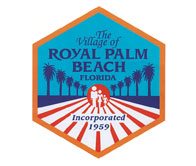The Royal Palm Beach Village Council took its first look at a 2012-13 budget Thursday that would hold the tax rate unchanged at 1.92 mills while improving services for residents.
At a tax rate of 1.92 mills, the owner of a home assessed at $150,000 after exemptions would pay $288 in village property taxes next year.
The total budget, released this week, will drop from $43.3 million to $32.3 million, due primarily to the $13 million Commons Park project that will be finished this year. Other major factors influencing the bottom line include a $2 million increase in impact fees and the addition of $665,000 from the newly created stormwater utility fund intended primarily for canal maintenance assessed to residential and commercial property owners.
Although another reduction in Royal Palm Beach’s total assessed property value is anticipated, it could be the smallest decrease since the recession began, Village Manager Ray Liggins wrote in his budget message. The current year’s gross taxable value for the village has fallen from $1.842 billion to $1.815 billion, which is a reduction of only 1.4 percent, or about $27 million.
“It would appear the negative slide of the revenue stream could be over and revenues may actually increase in future years,” Liggins wrote, noting that most other major income, such as state and tax-related revenues, are expected to have minimal increases.
Building-related revenues are also expected to increase, which Liggins related to an increase in non-residential construction.
While the number of development applications has decreased from recent years, Royal Palm Beach received a number of residential and commercial development applications. During the past six years, the village annexed about 320 acres of vacant land that will be the focus of new development.
Non-residential development is continuing to occur along Okeechobee and Southern boulevards and State Road 7, but not at the rapid pace experienced in the boom years of the last decade. Much of the immediate and short-term development will occur within vacant properties that have received site plan approval and properties whose site plans have already been partially developed.
Residential development is limited and occurring as infill within previously established subdivisions, Liggins noted.
In addition, the council in April approved an ordinance that authorized the creation of a stormwater utility fund that will absorb about $665,000 of public works costs currently paid out of the general fund.
Also, each year during the budget process, village staff projects its total revenues and expenditures to estimate how much money will remain to carry forward. That amount is then compared to the reserve requirements, and any excess is used to finance both operating expenses and capital projects for the coming year. Due to a recent change in governmental funding requirements, Royal Palm Beach was able to release about $5 million of previously held reserves and include them in the tentative five-year plan, which was presented to the council in May.
Village staff proposes to finance recurring annual capital projects for the 2012-13 fiscal year and defer non-recurring projects to the 2013-14 year.
Operating expenses would increase from about $18.8 million to $19.8 million. Village council expenses would decrease from $220,714 to $203,578; village manager expenses would increase from $1,109,871 to $1,200,987; finance would increase from $1,193,787 to $1,263,410; legal would increase from $318,379 to $321,875; police would decrease from $7,027,818 to $7,020,018; community development would increase from $1,090,345 to $1,115,961; engineering would increase from $527,509 to $558,850; public works would be reduced from $2,498,370 to $1,974,658, due largely to the absorption by the new $665,000 stormwater utility fund; parks and recreation would increase from $3,042,635 to $3,516,067; and non-departmental operating expenses would increase from $1,734,026 to $1,909,495.
The overall goals for the 2012-13 budget are to keep the ad valorem tax rate unchanged while increasing the level of service to residents with the addition of Commons Park, to complete the construction of the park, and to pursue development of available commercial property through work with the Business Development Board and direct contact with each property owner, Liggins noted.








